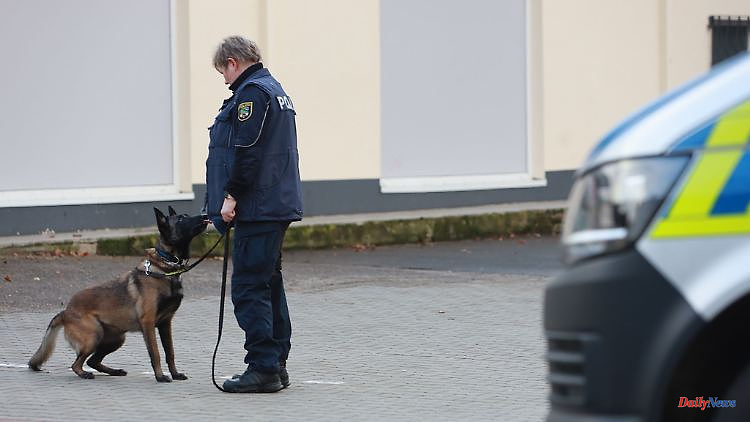They track down explosives and keep rioters at bay: dogs are extremely important for police work. However, the number of four-legged friends on duty is decreasing.
Magdeburg (dpa/sa) - They sniff out explosives, corpses, even banknotes - the service dogs of the Saxony-Anhalt state police are used when people reach their limits. Although the animal helpers are very important to the officers, their number has decreased in recent years. A total of 86 four-legged investigators are currently on duty, according to the state government's response to a request from state parliamentarian Nadine Koppehel (AfD). In 2017, the number of service dogs was still around 100.
The Ministry of the Interior cites retirements, new hires and restructuring within the state police as reasons. "Too expensive maintenance and training costs do not play a role here as long as there is a need for specialized service dogs," said a spokeswoman for the authorities at the request of the German Press Agency.
There are around 27 dual-trained service dogs on active duty. These are four-legged friends with a first specialization as a protection dog and a second specialization: for example as a tracking, drug, banknote, explosives, incendiary or corpse detection dog. There are also 17 tracking dogs. There are also 2 data carrier, 14 narcotics, incendiary and personal detection dogs.
According to a ministry spokeswoman, nine dogs are still in training. The service dogs are, for example, German and Belgian shepherds as well as the dog breeds Labrador, Weimaraner and terrier mix.
The training and further education of the dogs takes place in the service dog handler school in Bad Schmiedeberg (district of Wittenberg). On average, around 10,000 euros are estimated for this. In total, a service dog has cost the country around 20,000 euros over the years, according to the ministry.
The maintenance costs of a service dog in terms of supply, care and veterinary care do not differ from other dogs, said a ministry spokeswoman. A monthly expense allowance of 80 euros is paid for the active service dog for the care and provision of the animals, which are always housed at the service dog handler’s home. The country pays 55 euros per month for retired animals. This sum was set in 2015 and has not changed since then. In addition, the state of Saxony-Anhalt will take over the veterinary and physiotherapeutic measures in full.
After the probationary period and the successful completion of the aptitude test, the dog stays with its service dog handler until it is no longer fit for service, for example due to health restrictions. From the age of eight, this becomes more and more likely, according to the ministry. "At this point, the dual use is often deviated from and the service dog is only used in its capacity as a sniffer dog."












